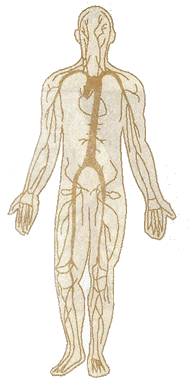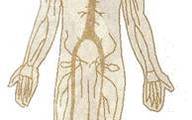Click on the title below “Yiling Pharmaceutical” for quick follow-up
 The meridians are divided into Yang meridians and Yin meridians Yang meridians and Yin meridians are vastly different:
The meridians are divided into Yang meridians and Yin meridians Yang meridians and Yin meridians are vastly different:
The Yang meridians refer to the collaterals distributed on the surface of the skin. Their main functions are to warm, nourish, and protect the skin. The meridians distribute the vital energy (jingqi) through the Yang meridians to the surface of the body, forming a protective barrier that shields the body from external pathogenic factors.
The Yin meridians run internally, distributed among the five organs and six bowels. They are an organic component of the structure and function of the five organs and six bowels. The meridian associated with the heart is called the Xin Luo (Heart Collateral), the one associated with the liver is called the Gan Luo (Liver Collateral), and the one associated with the lungs is called the Fei Luo (Lung Collateral), etc. The meridians run through the Yin meridians to circulate Qi and blood, deliver nutrients, and transmit information to ensure the normal functioning of the five organs and six bowels.


The collaterals of the meridians differ from the collaterals of the vessels
The Qi collaterals and blood collaterals each have their own functions:
“Collateral” has two major functions: one is to circulate vital energy (jingqi), and the other is to circulate blood. The collateral that circulates vital energy is called the meridian collateral, also known as Qi Luo (Qi Collateral), while the collateral that circulates blood is called the vessel collateral, hence referred to as Xue Luo (Blood Collateral).
The Qi Luo primarily disperses vital energy to various organs, forming the Qi of the organs, such as Xin Qi (Heart Qi), Gan Qi (Liver Qi), Fei Qi (Lung Qi), Shen Qi (Kidney Qi), and Pi Wei Qi (Spleen and Stomach Qi), thereby enabling the functions of these organs. The vital energy circulating in the Qi Luo plays a role in protecting the body, conveying information, and regulating the functions of various tissues and organs. In fact, the Qi Luo encompasses the functions of the modern medical nervous system, endocrine system, and immune system.
The Xue Luo circulates blood and is also the main site of blood production. Blood flows from the meridians into the collaterals, where nutrients are delivered to the organs and tissues of the body, and metabolic waste is removed. Blood then flows back from the collaterals into the meridians, completing the blood circulation and achieving its nourishing function. From both a functional and anatomical perspective, the Xue Luo is very similar to the small and medium blood vessels described in Western medicine, particularly the various levels of micro-arteries and veins that constitute microcirculation.
 Copyright notice: The text and images are sourced from the internet, and reposting is for sharing purposes only. If there are any copyright issues, please contact us for removal.
Copyright notice: The text and images are sourced from the internet, and reposting is for sharing purposes only. If there are any copyright issues, please contact us for removal.
1. Go back to the top of the article and click “Yiling Pharmaceutical” to subscribe
2. After successful subscription, click “View Historical Messages” to see past content

